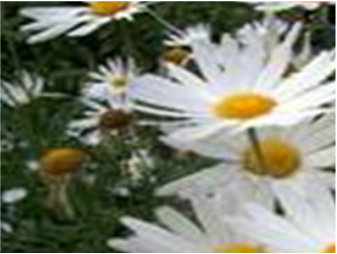Flowers are Entwined in Human Grief

Flowers comfort the Living and Accompany the Dead on Their Last Journey
Flowers are much more than accessories to human life. These are just a few of the flowers that have played a central role in cultural celebrations of life and death all around the world.From ancient to modern times, grieving people have always used flowers as a symbol of resurrection and hope. Flowers at funerals transcend centuries and cultures and are symbols of the optimism and endurance of the human soul.
Hollyhocks from the Neanderthals
There are about sixty species of Hollyhocks which come from the mallow family. They are native to southwestern and central Asia and produce biennial or short lived perennial plants that can grow as high as eleven feet. They produce broad, rounded lobed leaves and numerous flowers on a straight, central stem.
In the 1950s, Ralph and Rose Solecki excavated Shanidar Cave in northern Iraq and discovered pollen and flower parts buried with the skeletons of Neanderthal people who had lived 60,000 years ago. The flower parts came from flowers that included yarrow, cornflowers, St. Barnaby’s Thistle, and hollyhocks.
Marjoram From the Egyptians and Greeks
Origanum majorana, Lamiaceae, is a perennial herb or under shrub with sweet pine and citrus flavors, originating in North Africa and Southeast Asia, and now growing naturally in the Mediterranean region. Ancient Egyptians wore lotus garlands to honor their deceased loved ones and they left them at the tombs, just as many people leave flowers in a cemetery today.
Besides the lotus flower, ancient Egyptians commonly used water lilies, roses, narcissus, Iris, poppies, anemones and marjoram. Marjoram has been found in Egyptian mummy garlands dating from the First Century AD and it was a common herb in Egyptian gardens.
The ancient Greeks believed that if marjoram grew on a tomb the deceased person was happy. They crowned their dead with flowers and planted flowers around the tomb as an effort to guarantee the repose of the deceased and the purification of the ground, a custom that continues today.
Honeysuckle From the Romans
Honeysuckle or Lonicera is a shrub or vine that is found in Europe, Asia, and North America. There are about 180 species of honeysuckle. The name "honeysuckle" comes from the Old English hunigsuge or honeysuck, because honey or nectar can be sucked from its flowers. Honeysuckle produces oval shaped leaves and bell shaped flowers containing sweet nectar.
When Sulla, a Roman general and politician died, his friends sent 2,000 wreaths of flowers to honor him, including orchids, water lilies, honeysuckle and jasmine.
Daisies from the Celts
Daisies belong to the Daisy Family of Compositae, now known as Asteraceae, of flowering plants and are native to north and central Europe. The origin of the word 'Daisy' is Anglo Saxon "daes eage", literally meaning 'day's eye.' It was called this because daisies open at dawn as the day is just beginning.
Celtic Legend says that the spirits of children who died in childbirth scattered daisies on the earth to cheer their sorrowing parents.
Lilies from the Victorians
Lilies or Lilium are a large family of perennial plants of the lily family. They grow from a bulb and typically have white or colored trumpet-shaped flowers.Lilies are the classic representatives of the monocotyledons - plants with only one seed leaf.
Victorians believed that flowers were symbols of resurrection and eternity and featured flowers like larkspur, gladiola and lilies in their funerals. They placed flowers around the faces of the deceased and scattered flowers in their coffins. A Victorian etiquette book exhorted mourners: “They are love’s last gifts, bring flowers, pale flowers.”
Roses from 35,000 Million Years Ago to the 21st Century
Roses are perennial flower shrubs or vines of the genus Rosa, within the family Rosaceae. There are over 100 species of roses and they are native to Asia, Europe, North America, and northwest Africa. They form a group of erect shrubs or climbing or trailing plants with stems that often contain sharp prickles.
Early nomadic humans planted roses on their frequently travelled routes and roses flourished 35 million years ago. Petrified rose wreaths have been found in ancient Egyptian tombs. Ancient Confucian and Buddhist religious documents refer to roses.
Roses play an important part in the Christian tradition of the Garden of Gethsemane. One day in 1914, C. Austin Miles had a wrote a hymn called “In the Garden.,” that continued the flower association with funerals by describing Mary’s visit to Christ’s tomb in the Garden of Gethsemane “while the dew is still on the roses”. The hymn swept the country because it comforted the bereaved and painted a vivid picture of resurrection. It began the “In the Garden” movement where funeral parlors embraced a garden theme and emphasized flowers.
Flowers still are a vital part of expressing the grief and hope of people all over the world.
References
Kodo Metsumami, International Handbook of Funeral Customs, Greenwood, 1998
Michael Kerrigan, The History of Death, Burial Customs and Funeral Rites, from the Ancient World to Modern Times, The Lyons Press, 2007.
Gary Laderman, Rest in Peace: A Cultural History of Death and the Funeral Home in Twentieth Century America, Oxford University Press, 2005.
Kenneth Osbeck,101 Hymn stories, Kregel Publishing, 1982
